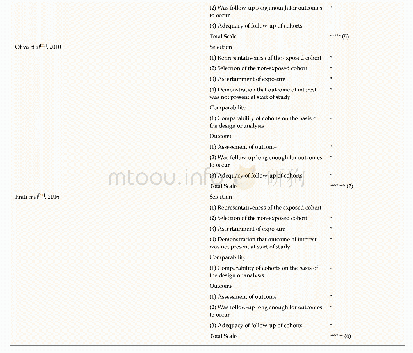《Table 1 Characteristics and performances of cultural biases》
 提示:宽带有限、当前游客访问压缩模式
提示:宽带有限、当前游客访问压缩模式
本系列图表出处文件名:随高清版一同展现
《"Sociodemographic characteristics, cultural biases, and environmental attitudes: An empirical application of grid-group cultural theory in Northwestern China"》
Grid-group cultural theory distinguishes four primary cultural biases based on the\""grid\""and the\""group\"",viewed as two dimensions of sociality.The grid dimension describes the degree of individual prescriptions,while the group dimension shows the extent to which an individual is tied to social units.An orthogonal combination of these two dimensions results in the production and demarcation of four patterns of social relations,corresponding to four quadrants shown in Figure 2:low grid and low group(A),high grid and low group(B),high grid and high group(C),and low grid and high group(D).The cultural biases or ways of living entailed in these social relations have been defined as individualism,fatalism,egalitarianism,hierarchism(see Figure 2).Combining with the\""worldview\"",cultural biases are often referred to as individualists,fatalists,hierarchists,egalitarians,competing and interrelating with each other(see Table 1)(Douglas,1970;Douglas and Wildavsky,1983;Schwarz and Thompson,1990;Thompson et al.,1990;Verweij et al.,2006) .
| 图表编号 | XD0023783500 严禁用于非法目的 |
|---|---|
| 绘制时间 | 2018.10.01 |
| 作者 | FangLei Zhong、AiJun Guo、XiaoJuan Yin、JinFeng Cui、Xiao Yang、YanQiong Zhang |
| 绘制单位 | Key Laboratory of Ecohydrology of Inland River Basin, Northwest Institute of Eco-Environment and Resources, Chinese Academy of Sciences、School of Economics, Lanzhou University、School of Economics, Lanzhou University、Institute For Public Policy, Gansu Acad |
| 更多格式 | 高清、无水印(增值服务) |





